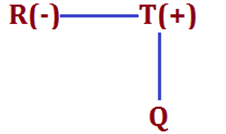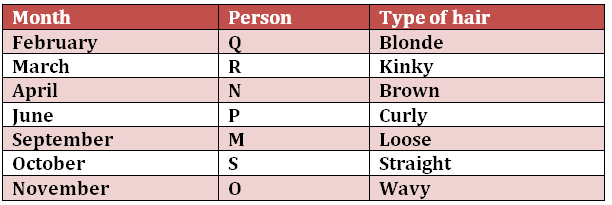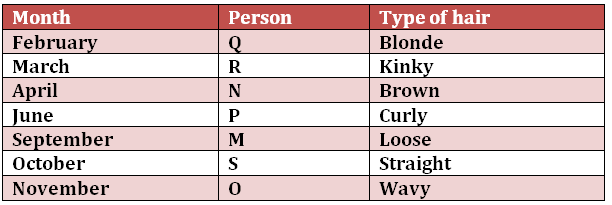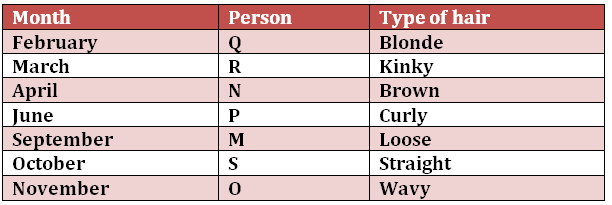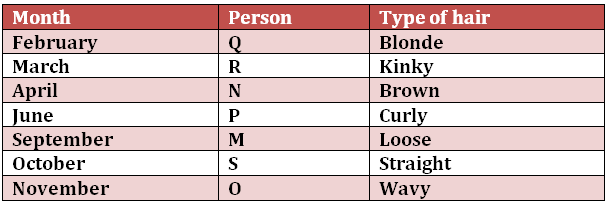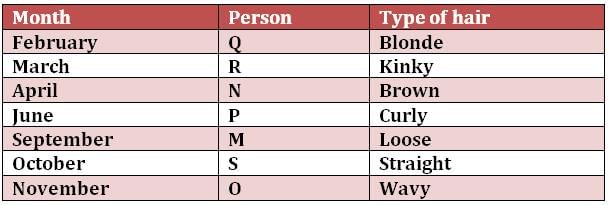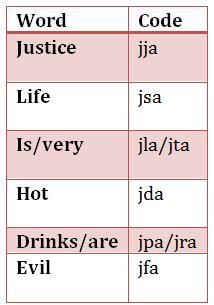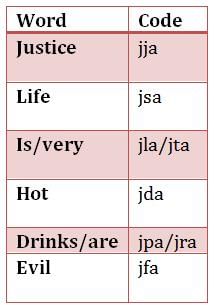NIACL Mock Test - 8 - Insurance MCQ
30 Questions MCQ Test NIACL (New India Insurance) Mock Test Series 2025 - NIACL Mock Test - 8
Study the following information carefully and answer these questions.
P, Q, R, S, T and U are six students studying in a class. Each of them of them has a different height and weight. The tallest is not the heaviest. T is taller than only P but lighter than R. Q is taller than S and P and heavier than only T and U. P is lighter than only S. T is heavier than U. S is taller than U and Q is not the tallest.
Q. How many of them are heavier than T?
P, Q, R, S, T and U are six students studying in a class. Each of them of them has a different height and weight. The tallest is not the heaviest. T is taller than only P but lighter than R. Q is taller than S and P and heavier than only T and U. P is lighter than only S. T is heavier than U. S is taller than U and Q is not the tallest.
Q. How many of them are shorter than Q?
P, Q, R, S, T and U are six students studying in a class. Each of them of them has a different height and weight. The tallest is not the heaviest. T is taller than only P but lighter than R. Q is taller than S and P and heavier than only T and U. P is lighter than only S. T is heavier than U. S is taller than U and Q is not the tallest.
Q. Who among them is tallest?
‘A + B’ means ‘A is sister of B’‘A × B’ means ‘A is mother of B’‘A – B’ means ‘A is brother of B’‘A ÷ B’ means ‘A is father of B’
Q. Which of the following represents ‘S is a cousin of T’?
‘A + B’ means ‘A is sister of B’‘A × B’ means ‘A is mother of B’‘A – B’ means ‘A is brother of B’‘A ÷ B’ means ‘A is father of B’
Q. Which of the given means ‘R, is a paternal aunt of Q’?
Seven people K, L, M, N, O, P and Q sitting in a straight line with equal distance between them, but not necessarily in the same order. Some of them are facing North and some are facing South. Only two people are sitting to the left of Q. Only two people sit between Q and L. K sits second to the left of L. The immediate neighbours of K face opposite directions. Only one person sits between K and M. P sits third to the left of M. N is not an immediate neighbour of L. Both the immediate neighbours of M face the same direction. K faces the same direction as that of M. O faces North. L sits to the immediate left of O.
Q. Who among the following sits exactly between Q and the one who is sitting to the immediate left of L?
Seven people K, L, M, N, O, P and Q sitting in a straight line with equal distance between them, but not necessarily in the same order. Some of them are facing North and some are facing South. Only two people are sitting to the left of Q. Only two people sit between Q and L. K sits second to the left of L. The immediate neighbours of K face opposite directions. Only one person sits between K and M. P sits third to the left of M. N is not an immediate neighbour of L. Both the immediate neighbours of M face the same direction. K faces the same direction as that of M. O faces North. L sits to the immediate left of O.
Q. Who among the following sits exactly in the middle of the line ?
Seven people K, L, M, N, O, P and Q sitting in a straight line with equal distance between them, but not necessarily in the same order. Some of them are facing North and some are facing South. Only two people are sitting to the left of Q. Only two people sit between Q and L. K sits second to the left of L. The immediate neighbours of K face opposite directions. Only one person sits between K and M. P sits third to the left of M. N is not an immediate neighbour of L. Both the immediate neighbours of M face the same direction. K faces the same direction as that of M. O faces North. L sits to the immediate left of O.
Q. Which of the statement is true as per the given information ?
Seven people K, L, M, N, O, P and Q sitting in a straight line with equal distance between them, but not necessarily in the same order. Some of them are facing North and some are facing South. Only two people are sitting to the left of Q. Only two people sit between Q and L. K sits second to the left of L. The immediate neighbours of K face opposite directions. Only one person sits between K and M. P sits third to the left of M. N is not an immediate neighbour of L. Both the immediate neighbours of M face the same direction. K faces the same direction as that of M. O faces North. L sits to the immediate left of O.
Q. Who is sitting second to the right of N ?
Seven people K, L, M, N, O, P and Q sitting in a straight line with equal distance between them, but not necessarily in the same order. Some of them are facing North and some are facing South. Only two people are sitting to the left of Q. Only two people sit between Q and L. K sits second to the left of L. The immediate neighbours of K face opposite directions. Only one person sits between K and M. P sits third to the left of M. N is not an immediate neighbour of L. Both the immediate neighbours of M face the same direction. K faces the same direction as that of M. O faces North. L sits to the immediate left of O.
Q. Which of the following pairs represents the immediate neighbour of L ?
Study the following information carefully and answer the questions given below.Give answer-
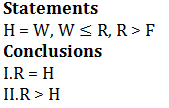
Study the following information carefully and answer the questions given below.Give answer-

Study the following information carefully and answer the questions given below.Give answer-
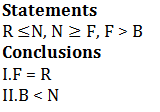
Study the following information carefully and answer the questions given below.Give answer-
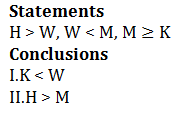
Study the following information carefully and answer the questions given below.Give answer-
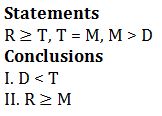
Study the following information carefully to answer the given questions.
Seven People namely M, N, O, P, Q, R and S have an anniversary but not necessarily in the same order, in seven different months of the same year namely February, March, April, June, September, October and November. Each of them also likes a different type of hair namely Curly, Straight, Blonde, Brown, Wavy, Kinky and Loose but not necessarily in the same order.
R has an anniversary in the month which has more than 30 days. Only one person has an anniversary between R and the one who likes Curly. Both S and O have an anniversary in one of the months after the one who likes curly. S has an anniversary immediately before O. The one who likes Blonde has an anniversary in the month which has less than 30 days. Only three people have an anniversary between the one who likes Blonde and the one who likes Loose. Only two people have an anniversary between S and the one who likes Brown. P has an anniversary immediately after the one who likes Brown. Only two people have an anniversary between P and Q. M has an anniversary immediately before the one who likes straight. O does not like Kinky.
Q. Which of the following represents the month in which S has an anniversary?
Study the following information carefully to answer the given questions.
Seven People namely M, N, O, P, Q, R and S have an anniversary but not necessarily in the same order, in seven different months of the same year namely February, March, April, June, September, October and November. Each of them also likes a different type of hair namely Curly, Straight, Blonde, Brown, Wavy, Kinky and Loose but not necessarily in the same order.
R has an anniversary in the month which has more than 30 days. Only one person has an anniversary between R and the one who likes Curly. Both S and O have an anniversary in one of the months after the one who likes curly. S has an anniversary immediately before O. The one who likes Blonde has an anniversary in the month which has less than 30 days. Only three people have an anniversary between the one who likes Blonde and the one who likes Loose. Only two people have an anniversary between S and the one who likes Brown. P has an anniversary immediately after the one who likes Brown. Only two people have an anniversary between P and Q. M has an anniversary immediately before the one who likes straight. O does not like Kinky.
Q. Which of the following does O like?
Study the following information carefully to answer the given questions.
Seven People namely M, N, O, P, Q, R and S have an anniversary but not necessarily in the same order, in seven different months of the same year namely February, March, April, June, September, October and November. Each of them also likes a different type of hair namely Curly, Straight, Blonde, Brown, Wavy, Kinky and Loose but not necessarily in the same order.
R has an anniversary in the month which has more than 30 days. Only one person has an anniversary between R and the one who likes Curly. Both S and O have an anniversary in one of the months after the one who likes curly. S has an anniversary immediately before O. The one who likes Blonde has an anniversary in the month which has less than 30 days. Only three people have an anniversary between the one who likes Blonde and the one who likes Loose. Only two people have an anniversary between S and the one who likes Brown. P has an anniversary immediately after the one who likes Brown. Only two people have an anniversary between P and Q. M has an anniversary immediately before the one who likes straight. O does not like Kinky.
Q. As per the given arrangement, Blonde is related to April and Brown is related to September following a certain pattern, which of the following is Loose related to following the same pattern?
Study the following information carefully to answer the given questions.
Seven People namely M, N, O, P, Q, R and S have an anniversary but not necessarily in the same order, in seven different months of the same year namely February, March, April, June, September, October and November. Each of them also likes a different type of hair namely Curly, Straight, Blonde, Brown, Wavy, Kinky and Loose but not necessarily in the same order.
R has an anniversary in the month which has more than 30 days. Only one person has an anniversary between R and the one who likes Curly. Both S and O have an anniversary in one of the months after the one who likes curly. S has an anniversary immediately before O. The one who likes Blonde has an anniversary in the month which has less than 30 days. Only three people have an anniversary between the one who likes Blonde and the one who likes Loose. Only two people have an anniversary between S and the one who likes Brown. P has an anniversary immediately after the one who likes Brown. Only two people have an anniversary between P and Q. M has an anniversary immediately before the one who likes straight. O does not like Kinky.
Q. Which of the following represents the people who have an anniversary in April and November respectively?
Study the following information carefully to answer the given questions.
Seven People namely M, N, O, P, Q, R and S have an anniversary but not necessarily in the same order, in seven different months of the same year namely February, March, April, June, September, October and November. Each of them also likes a different type of hair namely Curly, Straight, Blonde, Brown, Wavy, Kinky and Loose but not necessarily in the same order.
R has an anniversary in the month which has more than 30 days. Only one person has an anniversary between R and the one who likes Curly. Both S and O have an anniversary in one of the months after the one who likes curly. S has an anniversary immediately before O. The one who likes Blonde has an anniversary in the month which has less than 30 days. Only three people have an anniversary between the one who likes Blonde and the one who likes Loose. Only two people have an anniversary between S and the one who likes Brown. P has an anniversary immediately after the one who likes Brown. Only two people have an anniversary between P and Q. M has an anniversary immediately before the one who likes straight. O does not like Kinky.
Q. How many people have an anniversary between the months in which Q and M have an anniversary?
In each question below are given two/three statements followed by two conclusions numbered I and II. You have to take the given statements to be true even if they seem to be at variance with commonly known facts. Read all the conclusions and then decide which of the given conclusions logically follows from the given statements, disregarding commonly known facts. Give answer
Statements:
All flats are houses.
All places are parks.
Some houses are parks.
Conclusions:
I. All flats are parks.
II. At least some parks are places.
In each question below are given two/three statements followed by two conclusions numbered I and II. You have to take the given statements to be true even if they seem to be at variance with commonly known facts. Read all the conclusions and then decide which of the given conclusions logically follows from the given statements, disregarding commonly known facts. Give answer
Statements:
No hell is heaven.
No heaven is real.
Conclusions:
I. Some Hell can never be heaven.
II. Some hells are real.
In each question below are given two/three statements followed by two conclusions numbered I and II. You have to take the given statements to be true even if they seem to be at variance with commonly known facts. Read all the conclusions and then decide which of the given conclusions logically follows from the given statements, disregarding commonly known facts. Give answer
Statements:
Some currencies are dollars.
All coins are currencies.
Conclusions:
I. All dollars being currencies is a possibility.
II. No coin is a currency.
In each question below are given two/three statements followed by two conclusions numbered I and II. You have to take the given statements to be true even if they seem to be at variance with commonly known facts. Read all the conclusions and then decide which of the given conclusions logically follows from the given statements, disregarding commonly known facts. Give answer
Statements:
Some exams are difficult.
Some difficult are not easy.
Conclusions:
I. Some exams are easy.
II. Some easy are not difficult.
In each question below are given two/three statements followed by two conclusions numbered I and II. You have to take the given statements to be true even if they seem to be at variance with commonly known facts. Read all the conclusions and then decide which of the given conclusions logically follows from the given statements, disregarding commonly known facts. Give answer
Statements:
All claims are rights.
Some rights are wrong.
No decision is wrong.
Conclusions:
I. Some claims are wrong.
II. No claim is wrong.
Study the following information carefully and answer the given questions:
In a certain code language
‘justice is very life’ is written as ‘jla jta jja jsa’,
‘hot drinks are justice’ is written as ‘jja jpa jra jda’
and ‘evil is very hot’ is written as ‘jda jta jfa jla'.
Q. What is the code for ‘life’?
Study the following information carefully and answer the given questions:
In a certain code
language‘justice is very life’ is written as ‘jla jta jja jsa’,
‘hot drinks are justice’ is written as ‘jja jpa jra jda’
and ‘evil is very hot’ is written as ‘jda jta jfa jla’.
Q. ‘justice hot evil’ can be coded as
Study the following information carefully and answer the given questions:
In a certain code language
‘justice is very life’ is written as ‘jla jta jja jsa’,
‘hot drinks are justice’ is written as ‘jja jpa jra jda’
and ‘evil is very hot’ is written as ‘jda jta jfa jla’.
Q. What is the code for ‘drinks’?
Study the following information carefully and answer the given questions:
In a certain code language
‘justice is very life’ is written as ‘jla jta jja jsa’,
‘hot drinks are justice’ is written as ‘jja jpa jra jda’
and ‘evil is very hot’ is written as ‘jda jta jfa jla’.
Q. Which of the following is the code for ‘evil’?
Study the following information carefully and answer the given questions:
In a certain code language
‘justice is very life’ is written as ‘jla jta jja jsa’,
‘hot drinks are justice’ is written as ‘jja jpa jra jda’
and ‘evil is very hot’ is written as ‘jda jta jfa jla’.
Q. What does ‘jta’ stand for?






